Teaching
Current ongoing and previous thesis
Overview
2026
-
AI-based identification of Type 2 Diabetes-related fat distribution in the trunk using high-resolved magnetic resonance images from a large population-based study
2025
-
Multimodal Biological Age Estimation at Different Timepoints
-
Multimodal biological age estimation: Disentangling redundancy, uniqueness, and synergy of multimodal information
-
Deep Learning-based prediction of representative MR-Guided breast biopsy
-
Learning feature matching with foundation model guidance for motion correction in quantitative MRI
-
Improving Diagnosis of Alzheimer's Disease with Interpretable Models
-
Evaluating Interactive Deep Learning Approaches in Brain MRI Segmentation
-
Deep learning-based MR Guided Breast Biopsy
-
Investigation of biological age in large-scale population studies
-
Landmark Detection in Interventional Magnetic Resonance Imaging During Breast Cancer Biopsy
-
Contrast-Invariant Motion Correction Network for multi-parametric MRI
-
The aging heart: Associations between cardiac structure, function, and demographic factors in a population-based study
-
Analysis for sustainable MR imaging operation
-
Multimodal contrastive learning for biological age regression
-
Unsupervised Keypoint-Based Registration for Parametric MR
-
Medical Dashboard for epidemiological studies
-
Medical Data Analysis and Visualization in the UK Biobank and NAKO
-
Image quality assessment
-
Machine learning-based analysis on the energy efficiency of magnetic resonance imaging
2024
-
Motion artifact detection in MRI
-
Distribution analysis of organ and tissue segmentation in large scale epidemiological cohorts
-
Optimization of Mutual Information Minimization Model in Deep Learning for Multi-Confounder Datasets
-
Real-Time Landmark Detection in Interventional Magnetic Resonance Imaging During Breast Cancer Biopsy
-
Semantic Segmentation in multi-center studies: Investigation on generalizability
-
Combining images and tabular data to enhance downstream task performance in medical image analysis
-
Local Image Quality Assessment in abdominal MRI
-
Unveiling the Black Box: Integrating Interpretability into Neural Networks for Explaining Diabetes Severity
-
Comparison of radial and spiral VIBE for pediatric imaging
-
Prompt-tuning for Segmentation of Human Skeletal Muscle
-
Enhancing MR Downstream Task Performance by incorporating tabular data using a CLIP-based approach
-
Segmentation of Medical Images using Connectivity Masks as Input Data
-
Generative models for semantic map to MR image translation
-
Joint groupwise non-rigid registration and segmentation for accelerated cardiac cine MR Images
2023
-
Extending the Mutual Information Minimization Model with multiple confounders and classes
-
Deep learning based image quality assessment
-
Enhancing Classification Performance in Imbalanced Datasets: A CLIP-Based Approach with Metadata and MR Images
-
Does B-Cos Models improve the interpretability of deep-learning based medical image analysis?
-
Software algorithms for Endoscopic imaging
-
Automatic segmentation for multiparametric magnetic resonance images
2022
-
Hyperparameter optimization for MR image reconstruction architectures based on uncertainty estimation
-
Deep learning based locally low-rank approximation
-
Attention-based motion detection in epidemiological cohorts
-
Accelerating cardiac MR by exploiting spatio-temporal information
-
Self-supervised image registration for renal MRI
-
Robust MRI motion detection in varying environments
-
Uncertainty quantification for deep learning MR image reconstruction
2021
-
3D Generative models for MR image super resolution
-
DL-based motion-corrected reconstruction: an evaluation study
-
Cardiac MR image reconstruction levearaging spatio-temporal redundancies
-
Motion-compensated image reconstruction using generative networks
-
MR motion artefact detection and correction in image and k-space
-
Temporal-aware super resolution for cardiac CINE MR
-
Efficient long-term and short-term MR image registration
-
Spatiotemporal Through-plane Super-resolution Networks for Isotropic Cardiac Cine MRI Investigated in the UK Biobank
2020
-
Clinical feasible pipeline for semantic MR segmentation
-
Clinical feasible pipeline for motion artifact detection and correction
-
LAP-Net: Deep learning-based non-rigid registration in k-space for MR imaging
-
Prediction of response to immunotherapy and overall survival rate in temporal staging of melanoma patients with multi-modal hybrid imaging
-
Automatic lesion segmentation and staging in a cohort of melanoma patients acquired with multi-modal hybrid imaging
-
Intelligent brushes for automatic segmentation and detection in multi-modality imaging
-
DL-based motion-corrected reconstruction of time-resolved MRI
-
Semantic Segmentation for renal MRI
-
Evaluation and optimization of non-rigid registration in k-space
-
Exploiting spatio-temporal redundancies for high-dimensional deep-learning based image reconstruction
-
Plug-and-play priors for MR motion artifact detection and correction
-
Investigation on the efficacy of plug and play priors and unrolled physics-based deep-learning MR image reconstruction
Potential Bachelor/Research/Master thesis
Some of the topics are in collaboration with the Institute of Signal Processing and System Theory, University of Stuttgart and the Max Planck Institute for Intelligent Systems, Empirical Inference, Tübingen.
The following section gives an overview of the potential topics.
Overview: AI-assisted data processing
The inclusion of artifical intelligence (AI) into medical data processing can help to improve performance by (but not limited to) increasing precision, boosting quality of service, easing processing and reducing computational times. It enables to develop patient-centered workflows with personalized treatments that include: data processing from multiple imaging modalities acquired with multi-parametric imaging sequences, advanced reconstruction, post-processing and anylsis techniques.
In acquisition step:
- Sequence development for multi-parametric and motion-resolved MRI
- Patient-adaptive sampling optimization including online feedback according to movement cycle, SNR, parametric information
- Monitor imaging state by external sensors (Microsoft Kinect camera, respiratory belt, ...) to match e.g. to a motion model
In reconstruction step:
- Conventional and deep-learning based image reconstruction: Inclusion of multi-parametric and motion information, high-dimensional data processing, model-based reconstructions
- Non-rigid motion estimation and correction: Deep-learning based image registration and motion correction
- Sensor fusion to map imaging states to external surrogate signals
In post-processing step:
- Convolutional neural networks for MR image artifact localization and quantification
- Generative models for image-to-image translation
- Semantic segmentation of organs and tissues
- Automatic quality control measures
- Biomarker feature extraction
In analysis step:
- Treatment response predicition
- Combination of imaging and non-imaging data
- Causal discovery
- Biological age estimation
Proposed topics
Please refer to the list of research projects and send us your application (interested topic, CV, transcript of records) to: midaslabthesis@gmail.com
Prerequisites
- Highly motivated, independent and structured way of working
- Interest in machine learning, deep learning and signal processing
- Good German and/or English skills (spoken and written)
- Programming expertise in Python is beneficial
- Knowledge about medical imaging is beneficial
Zertifikate und Verbände

Focus: Top Nationales Krankenhaus 2025

Stern: Deutschlands Ausgezeichnete Arbeitgeber Pflege 24/25

Qualitätspartnerschaft mit der PKV

Erfolgsfaktor Familie

Die Altersvorsorge für den Öffentlichen Dienst






